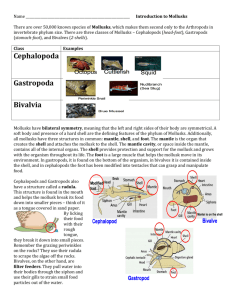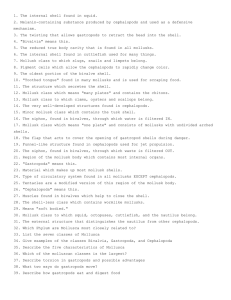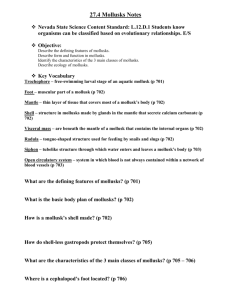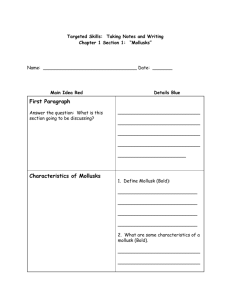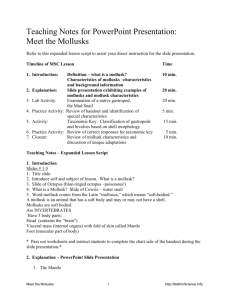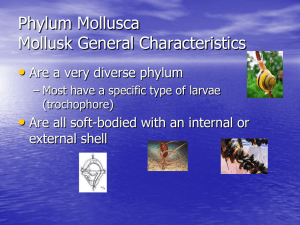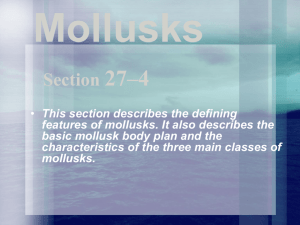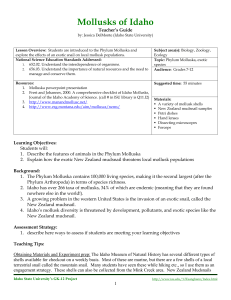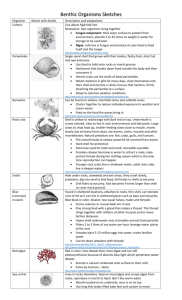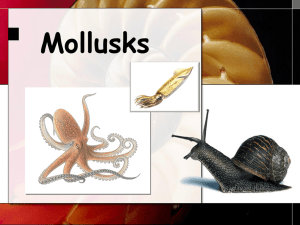Shell Identification Lab Worksheet: Mollusks
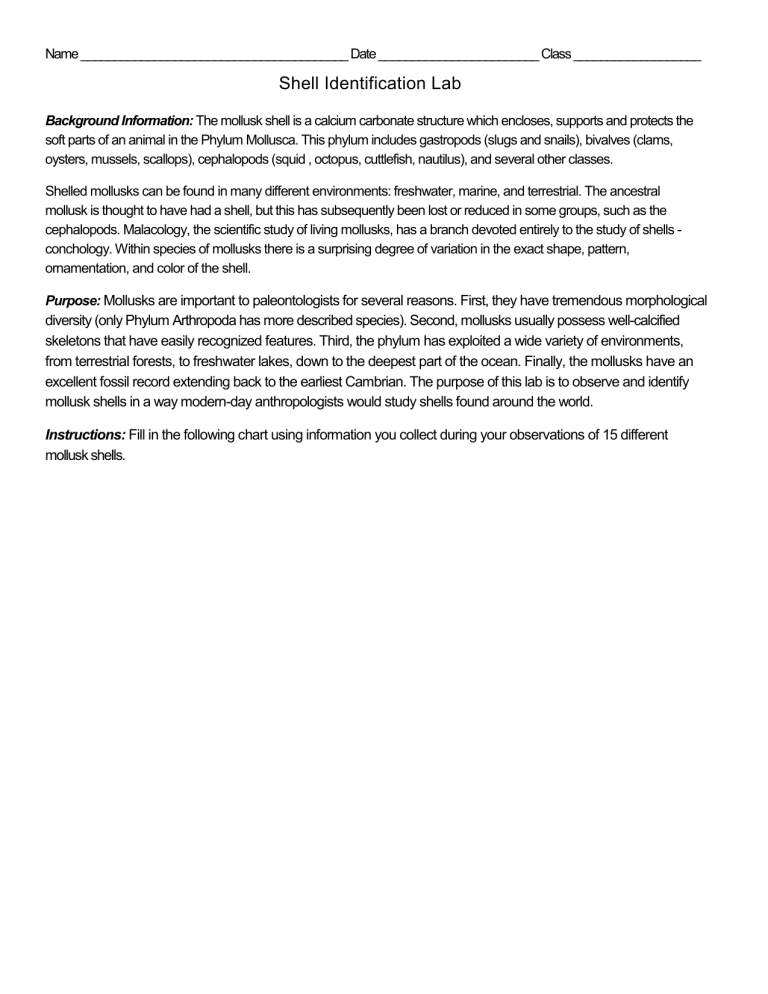
Name ________________________________________ Date ________________________ Class ___________________
Shell Identification Lab
Background Information: The mollusk shell is a calcium carbonate structure which encloses, supports and protects the soft parts of an animal in the Phylum Mollusca. This phylum includes gastropods (slugs and snails), bivalves (clams, oysters, mussels, scallops), cephalopods (squid , octopus, cuttlefish, nautilus), and several other classes.
Shelled mollusks can be found in many different environments: freshwater, marine, and terrestrial. The ancestral mollusk is thought to have had a shell, but this has subsequently been lost or reduced in some groups, such as the cephalopods. Malacology, the scientific study of living mollusks, has a branch devoted entirely to the study of shells - conchology. Within species of mollusks there is a surprising degree of variation in the exact shape, pattern, ornamentation, and color of the shell.
Purpose: Mollusks are important to paleontologists for several reasons. First, they have tremendous morphological diversity (only Phylum Arthropoda has more described species). Second, mollusks usually possess well-calcified skeletons that have easily recognized features. Third, the phylum has exploited a wide variety of environments, from terrestrial forests, to freshwater lakes, down to the deepest part of the ocean. Finally, the mollusks have an excellent fossil record extending back to the earliest Cambrian. The purpose of this lab is to observe and identify mollusk shells in a way modern-day anthropologists would study shells found around the world.
Instructions: Fill in the following chart using information you collect during your observations of 15 different mollusk shells.
3.)
4.)
5.)
6.)
1.)
2.)
7.)
9.)
8.)
10.)
Shell Name
Mollusk Shell Identification
Shell Illustration Mollusk Class
Unique Characteristics
(shape, color, pattern, etc)
Name ________________________________________ Date ________________________ Class ___________________
Instructions: Using the illustrations as a visual guide, label the following mollusk groups: Cephalopoda, Polyplacophora,
Gastropoda, Bivalvia, Scaphapoda, and Monoplacophora.
Mollusk Shell Identification
Shell Name Shell Illustration Mollusk Class
11.)
12.)
13.)
14.)
15.)
Analysis Questions:
1.) Mollusk shells are made up of _________________________________________.
2.) What is an example of a mollusk that does NOT have a shell?
3.) Define conchology.
4.) Explain why shells are so important to Paleontologists.
5.) Using your data table, which class of mollusk do you think is the most numerous with approximately 35,000 species?
Unique Characteristics
(shape, color, pattern, etc)
